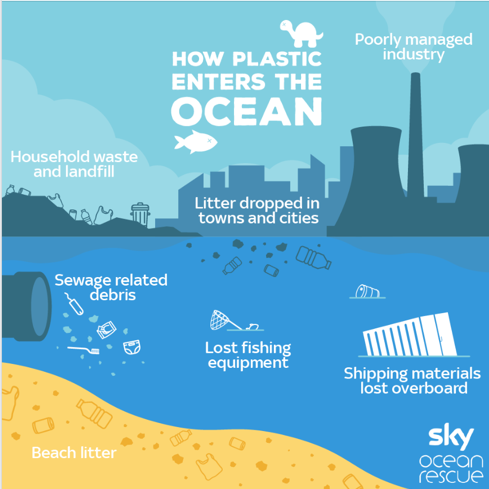1C Introduction - The Challenge
Top Tip: The effects of plastic on nature and humans is extensive. Before you start PFC you should know what these effects are and why reducing plastics is so important.
Plastic Pollution Overview
The Plastic Pollution Issue
Plastic pollution is one of the greatest challenges of the 21st century. Developed in the early 20th century, the versatility, lightweight and flexible properties of plastic have given us convenience for packaging, ease of shipping and many important products, like electronics or medical devices.
However, the non-stop convenience and production of plastic has turned this material into an environmental and public health nightmare. Half of all plastic is designed to be used once and then thrown away. (UN Environment has a great link on this subject )
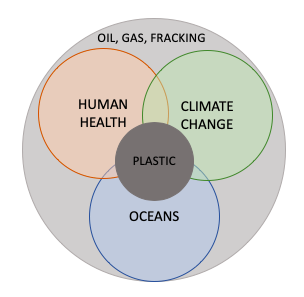
There are many reasons to work towards a plastic-free environment:
- Plastic contributes to greenhouses gases that lead to CLIMATE CHANGE[i]
- Some chemicals in plastics are known carcinogens or endocrine disrupters that affect HUMAN HEALTH[ii]
- Plastics are the major source of pollution in the OCEANS[iii]
- Plastics are derived from COAL, OIL & GAS extracted by DRILLING & FRACKING[iv]
Of the 300 million tons of plastic produced every year, more than half are classified as “single-use plastic” (SUP) items, designed to be used once and then discarded. Mismanaged plastic waste, a result of inadequate waste management coordination and infrastructure, makes its way into the environment. The impacts are most visible in the ocean, with approximately 8 million tons of plastic waste leaking into the ocean each year, equivalent to a truck full of plastic every minute.
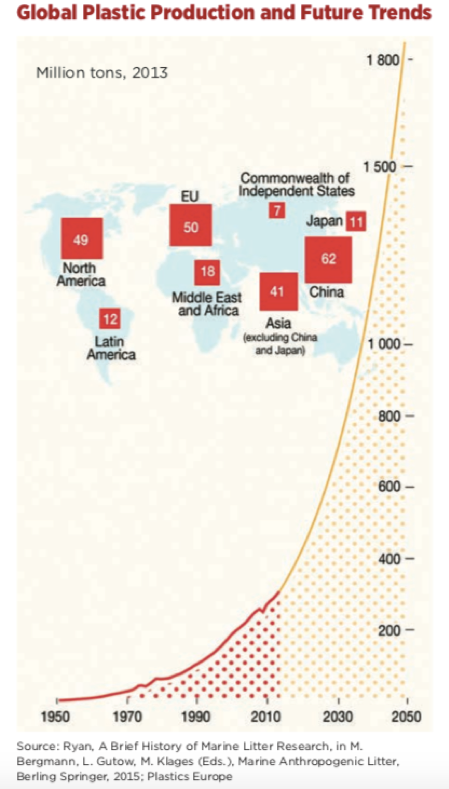
Statistics on plastics and plastic related pollution
- 15 million tons in the 1960s to 311 million tons in 2014 and is expected to triple by 2050, when it would account for 20 percent of global annual oil consumption[i]
- The ocean is expected to contain 1 ton of plastic for every 3 tons of fish by 2025 and, by 2050, more plastics than fish (by weight).[ii]
- That is over 150 million tons of plastic waste in the ocean today. Without significant action, there may be more plastic than fish in the ocean, by weight, by 2050.[iii]
- Studies suggest that the total economic damage to the world's marine ecosystem caused by plastic amounts to at least $13 billion every year.[iv]
- Each year, at least 8 million tons of plastics leak into the ocean – which is equivalent to dumping the contents of one garbage truck into the ocean every minute. If no action is taken, this is expected to increase to two per minute by 2030 and four per minute by 2050.[v]
- Plastic packaging generates significant negative effects, conservatively valued by UNEP at $40 billion.[vi]
[v] . (Antoine Frérot, CEO, Veolia) (World Economic Forum Report, The New Plastics Economy, 2016)
[vi] (World Economic Forum Report, The New Plastics Economy, 2016)
[vii] (Ocean Conservancy and McKinsey Center for Business and Environment, Stemming the Tide: Land-based strategies for a plastic-free ocean, 2015)
[ix] (World Economic Forum Report, The New Plastics Economy, 2016)
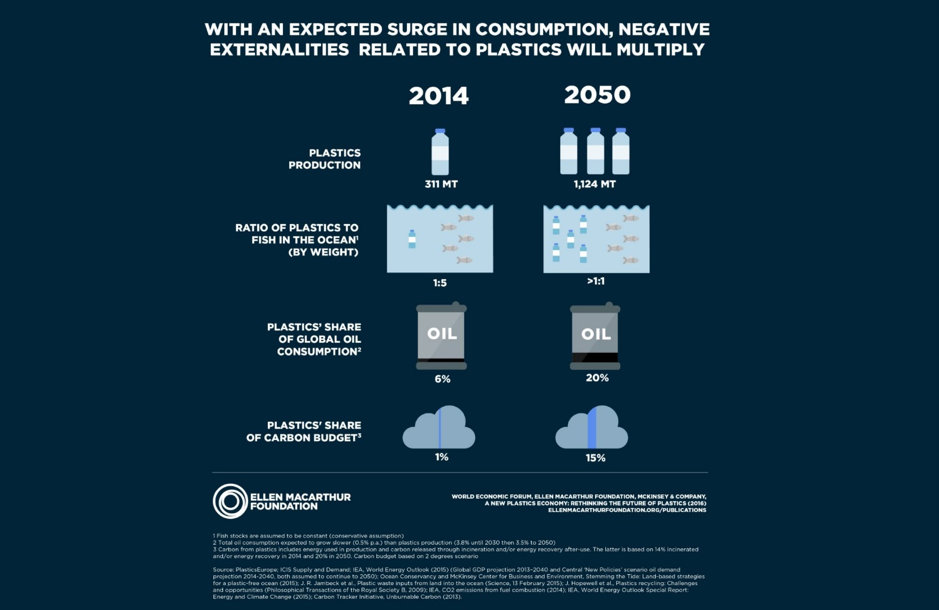
- Packaging represents 26 percent of the total volume of plastics used.[i]
- In 2017, the global production of plastics reached 348 million metric tons (up from 335 in 2016), with 64 million metric tons produced in Europe alone.[ii]
- In a business-as-usual scenario of unchecked plastic-waste leakage, the global quantity of plastic in the ocean would nearly double to 250 million metric tons by 2025.[iii]
- Researchers estimate that more than 8.3 billion tons of plastic has been produced since the early 1950. About 60 percent of that plastic has ended up in either a landfill or the natural environment.[iv]
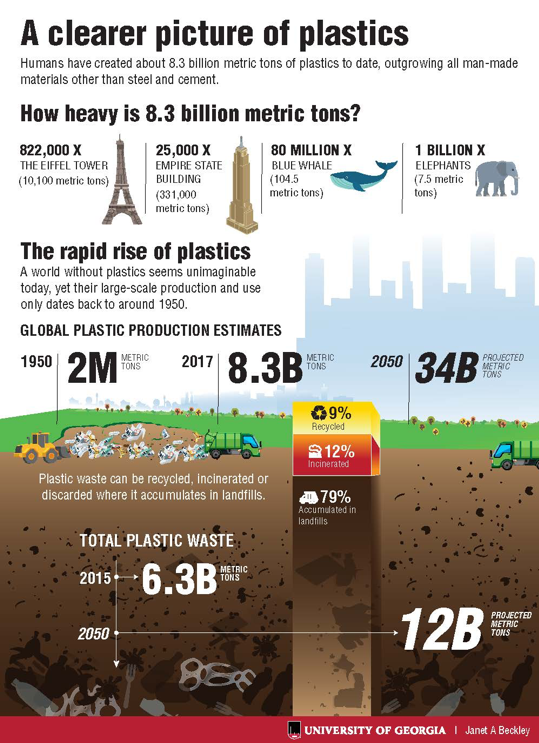
More than 99 percent of plastics are produced from chemicals derived from oil, natural gas and coal — all of which are non-renewable resources. If current trends continue, by 2050 the plastic industry could account for 20 percent of the world's total oil consumption.[i]
Only 9 percent of all plastic waste ever produced has been recycled. About 12 percent has been incinerated, while the rest — 79 percent — has accumulated in landfills, dumps or the natural environment.[ii]
According to Valuing Plastic, the annual damage of plastics to marine ecosystems is at least $13 billion per year. Asia-Pacific Economic Cooperation estimates that the cost of ocean plastics to the tourism, fishing and shipping industries was $1.3 billion in that region alone[i].
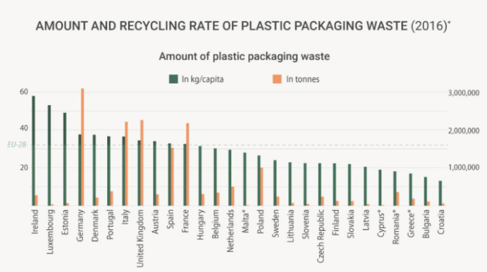
- According to Valuing Plastic, the annual damage of plastics to marine ecosystems is at least $13 billion per year. Asia-Pacific Economic Cooperation estimates that the cost of ocean plastics to the tourism, fishing and shipping industries was $1.3 billion in that region alone.[i]
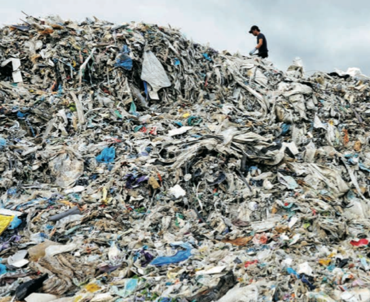
- · The recycling rate for plastics in general is even lower than for plastic packaging, and both are far below the global recycling rates for paper (58 percent) and iron and steel (70 percent to 90 percent).[i]
- · In 2013, the industry put 78 million tons of plastic packaging on the market, with a total value of $260 billion.[ii]
Plastics and Consumption – Many plastics contain chemicals and additives that can migrate back out of plastics into our food, our water, and ultimately our bodies. For example, Phthalates and bisphenols are added to plastics to make them soft, hard, or flexible - these chemicals mimic our hormones and are called endocrine disruptors. These can have serious health effects through microdosing - particularly for young people, is found in many types of plastic commonly used for food storage.
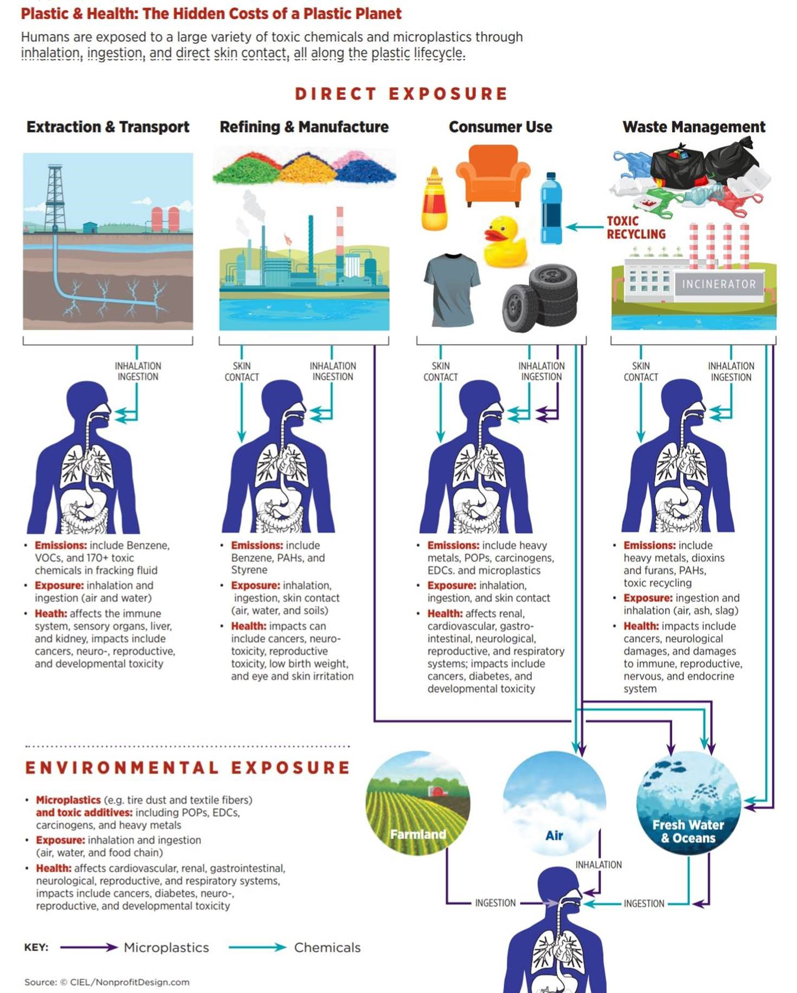
Disposal – Plastic stays around for hundreds of years or more. Unfortunately, only 9% of the plastic every produced gets recycled; the majority ends up in landfills or in the environment. In fact, 8 million tons of plastic enter our waterways each year. All that plastic is starting to show up in unexpected (and unwelcome) places, from our tap water to our food. The “smog” of microplastics in our ocean is smothering the small organisms that make up the base of the food chain and could have serious implications for our food systems.
EXTRACTION
90% of plastics produced are from virgin fossil feedstocks Plastics are made from petrochemicals, which originate from oil, fracking and drilling of natural gas or coal. These are transported to refineries to be distilled in different fractions, including naphtha. Then, naphtha is cracked into monomers which, after chemical process, constitute virgin plastic polymers.
MANUFACTURE
Polymers are mixed with additives to improve plastic characteristics. Then, packaging producers manufacture items.
CONSUMER USE
Humans are affected through multi-pronged exposure to chemicals in plastic, with differing impacts according to the toxicity (hazard) and the levels of exposure
During production, additives are mixed with virgin plastic polymer to improve performance, including features such as malleability, durability or colouring but Majority of these additives have not been tested, but two that are most studied are phthalates (pronounced “thalates”) and Bisphenol A, i.e. BPA.
Some of the additives used in plastic are shown to be endocrine disruptors, meaning they affect the delicate balance of glands and organs that produce, store and secrete hormones
There are also many human health impacts associated with plastic, both through the chemicals contained in plastic which we encounter daily, and the impacts on the environment, which affect us. Many of the key chemicals in plastic, such as Bisphenol A (BPA or BPS), plasticisers or phthalates (used to make plastics flexible), and flame retardants have been shown to disrupt the hormonal system, impair brain function and cause reproductive abnormalities.
PLASTIC WASTE MANAGEMENT
The impact of the disposal depends on the after-use pathway.
- When plastic makes it way to the ocean, it can end up back on our dinner plates through fish, shellfish, salt, water and we are then at risk of ingesting not only the plastic but all of the associated absorbed chemicals (e.g. persistent organic pollutants in the ocean).
As plastic has entered human food chain, it impacts human health through:
o Food security: Decrease of food availability for humans. Experiments conducted in laboratories shown that microplastics exposure to organisms has impacts such as: mortality, reduce feeding rate, body mass and metabolic rate.
o Food safety: After ingestion, additives and pollutant contained in plastic can be transferred to animals and cause trouble in the key vital functions. Organism may be physically damaged and cellular functions altered due to plastic particle absorption. Plastic waste can contaminate organisms and contribute to the increased risk of human and animal disease.
- Landfill – additives used in plastics can migrate from the plastics to the leachate (the liquid that drains or 'leaches' from a landfill), contaminating groundwater.
- Low income population often burn plastic waste for heating or cooking purposes.
- Incineration of plastic waste releases toxic chemicals into the air and directly release carbon which was captured in plastic products.
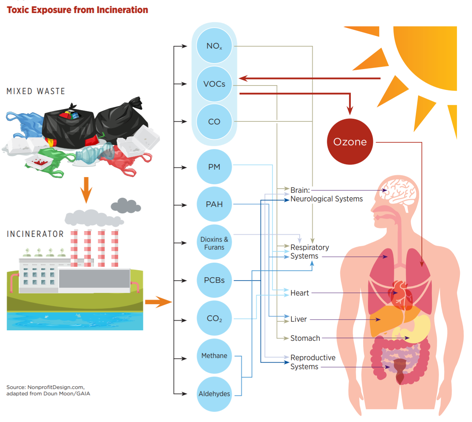
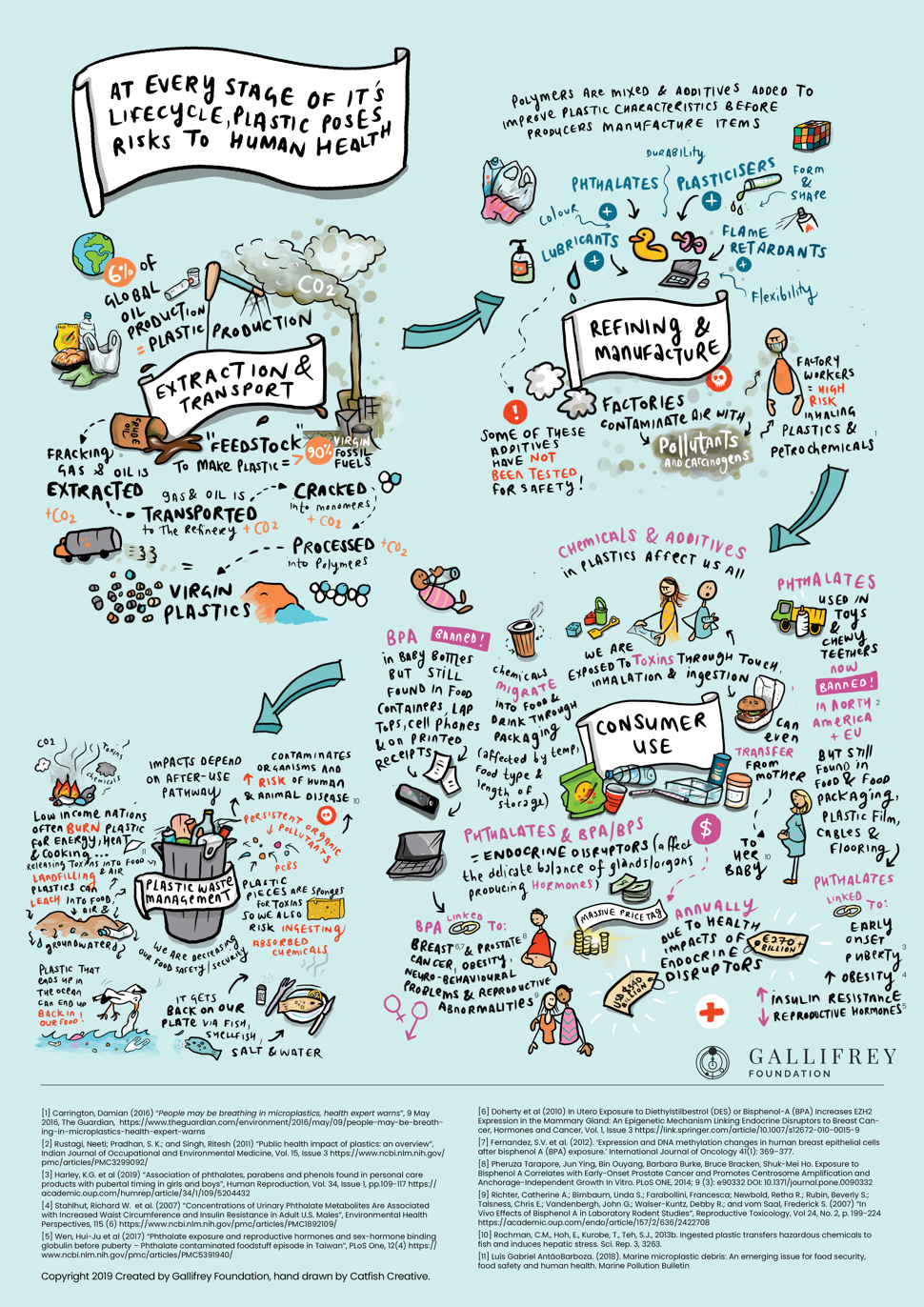
WHAT CAN WE DO?
It is essential to stem or stop the flow of the plastic tap at the source with two ingredients: ATTITUDE AND ACTION
Attitude
Right now, everyone is talking about plastics. Many people are doing something. But there is so much more to do.
It is important to understand that Plastic-free, is more likely to be plastic-reduced. It also means there will be obstacles along the way as you try to implement plastic-free behaviour and actions.
This is why it is important to persuade as many parties as you can of the need to go plastic free. It is also important to not feel discouraged if you do not get everything you ask for. Each step forward, is a step in the right direction.
Right now, there are thousands of initiatives taking place – inventions, new laws, new systems. Some of these may prove to be bad ideas after a while. Don’t give up. Just re-adapt or reject and start again. This is how real life works and the art of negotiation and persuasion is probably the biggest challenge you will face.
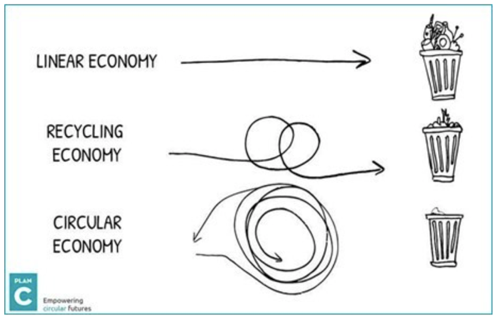
Action
- Educating the public on the importance of reducing single-use plastics (SUP),
- Working with manufacturers to change product design or delivery to consider a closed-loop cycle of resources
- Improving waste management capacity,
- Drastically reducing the demand for plastic.
